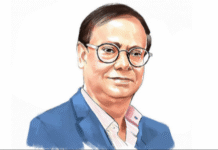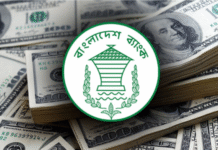Two-day fair on Indian textiles comes to an end today

Dinesh Modi and Suresh Modi, brothers and directors of Mumbai-based fabric maker Banbury, have been looking for a partner in Bangladesh to manufacture shirts and suits to be exported to customers in the West.
“If we can find a good partner here, we can collaborate to supply the fabric and they will stitch the shirts and suits for our existing Western buyers,” said Suresh at his stall at the two-day exhibition that started at Sonargaon Hotel in Dhaka yesterday.
India’s Synthetic and Rayon Textiles Export Promotion Council (SRTEPC) in association with the Indian High Commission in Dhaka, is organising the exhibition, where 22 Indian companies are participating to showcase their items.
“We are interested in Bangladesh because the labour costs in India are much higher,” Suresh said. Banbury produces fabric worth $36 million a year, mainly for shirts and suits, he said.
The Indian and Bangladeshi companies can do good business together as India is stronger in fabrics and Bangladesh is stronger in garment manufacturing, he said.
Indian fabric makers are looking to partner with Bangladesh as the latter has already proved its strength in the garment business worldwide. Fair participants also said their exports to Bangladesh have been on the rise for a high demand for fabric.
Currently, local mills in Bangladesh can supply more than 80 percent of raw materials needed for the knitwear sub-sector and 40 percent for the woven sub-sector. The remaining demand for knitwear and woven fabrics and raw materials is met mainly by imports from India and China.
“India can play a big role by supplying fabrics to Bangladeshi garment manufacturers as both countries have their own strengths,” said Sanjeev Saran, convener of the Export Promotion Committee of India.
Saran, the past chairman of SRTEPC, said Indian companies can supply manmade textiles, polyester, viscose, acrylic and yarn.
Meanwhile, India itself can be a big market for Bangladesh as the country currently enjoys duty-free access to the Indian market for garment items, he said.
He imports apparel items worth $5 million from Bangladeshi brands to re-export to Scandinavian countries.
But the businesses of both countries should be meaningful, he said. “We want a win-win business relationship between the two countries.”
“We are here in Bangladesh as collaborators, not competitors. Bangladesh has a vibrant garments sector and India is a big destination for backward integration.”
V Anil Kumar, a participant at the exhibition, said it is time for Bangladesh to move to high-end, value-added items as it has already done well in cotton items.
India can supply manmade fabrics to Bangladeshi garment makers at competitive rates, he added.
A wide range of textiles products, such as polyester spun yarn, viscose yarn, suiting clothes, ladies’ dress fabrics and home textile fabrics are being displayed by the Indian companies at the seventh edition of the exhibition.
In the past five years, exports of synthetic and blended textiles from India to Bangladesh rose from $124 million in 2009-10 to $237 million now, he said.
Source: The Daily Star









